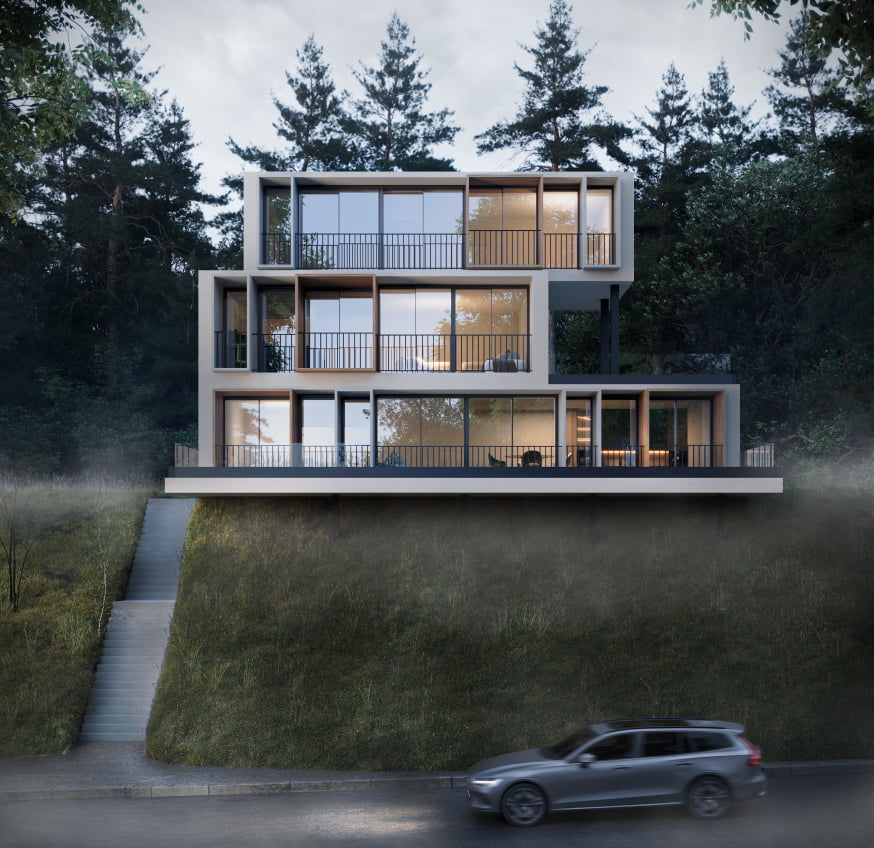History of architectural visualization
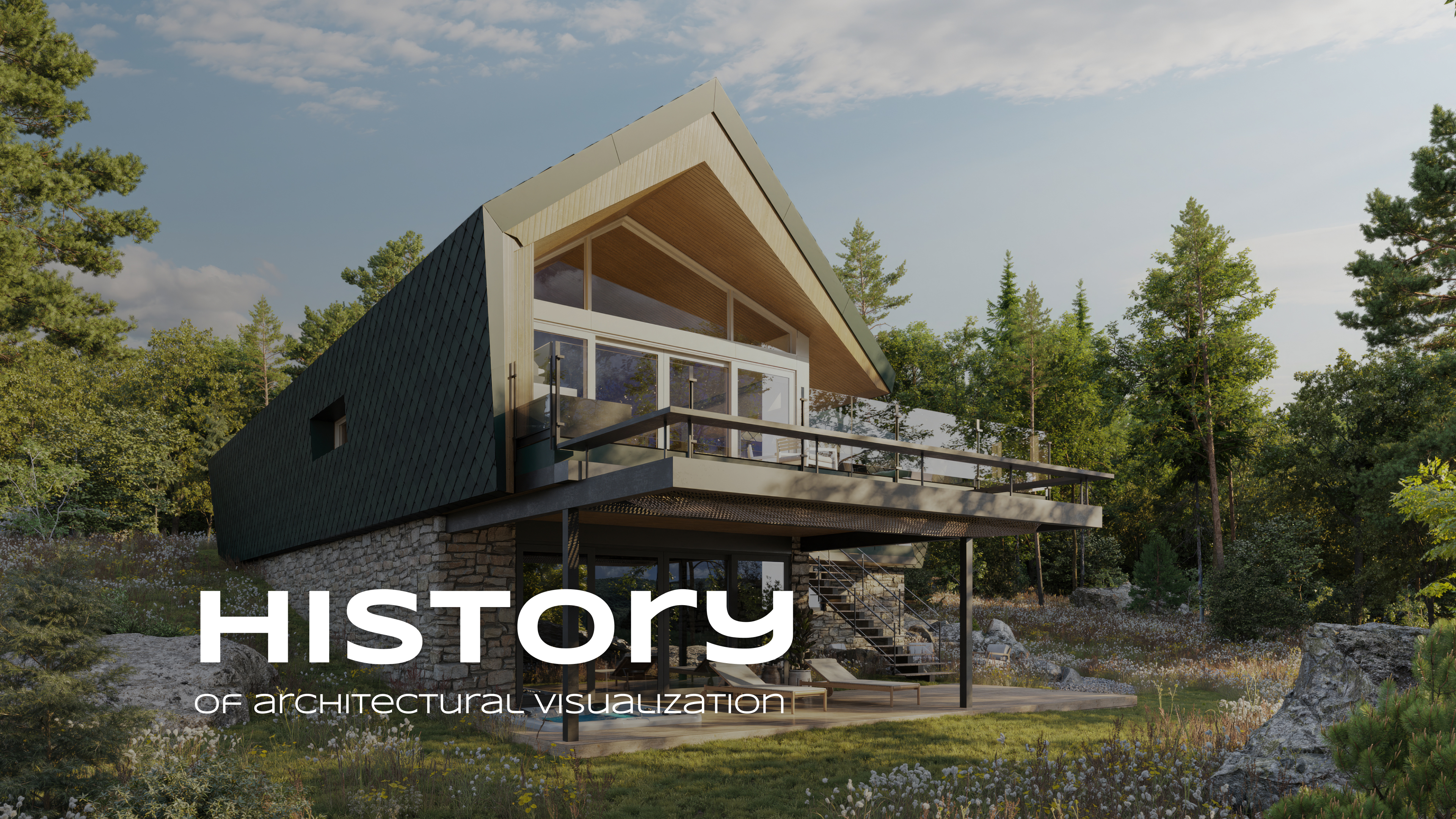

Reach Out for Expert Architectural Visualization
Thousands of years ago a carved rock sketch of a geometric figure could become a manifestation of a miracle of light or a monument of unparalleled art.
Today methods of representing reality have evolved witnessing the birth of linear perspective, photography and the first software for 3D modeling. The methods of representing reality transform architecture itself introducing new meanings. They compel us not only to stay connected to the surrounding world but also to feel it. The concept of order and symmetry, characteristic of flat paper drawings easily transitioned into modernity. It has its own name as architectural 3D visualization.
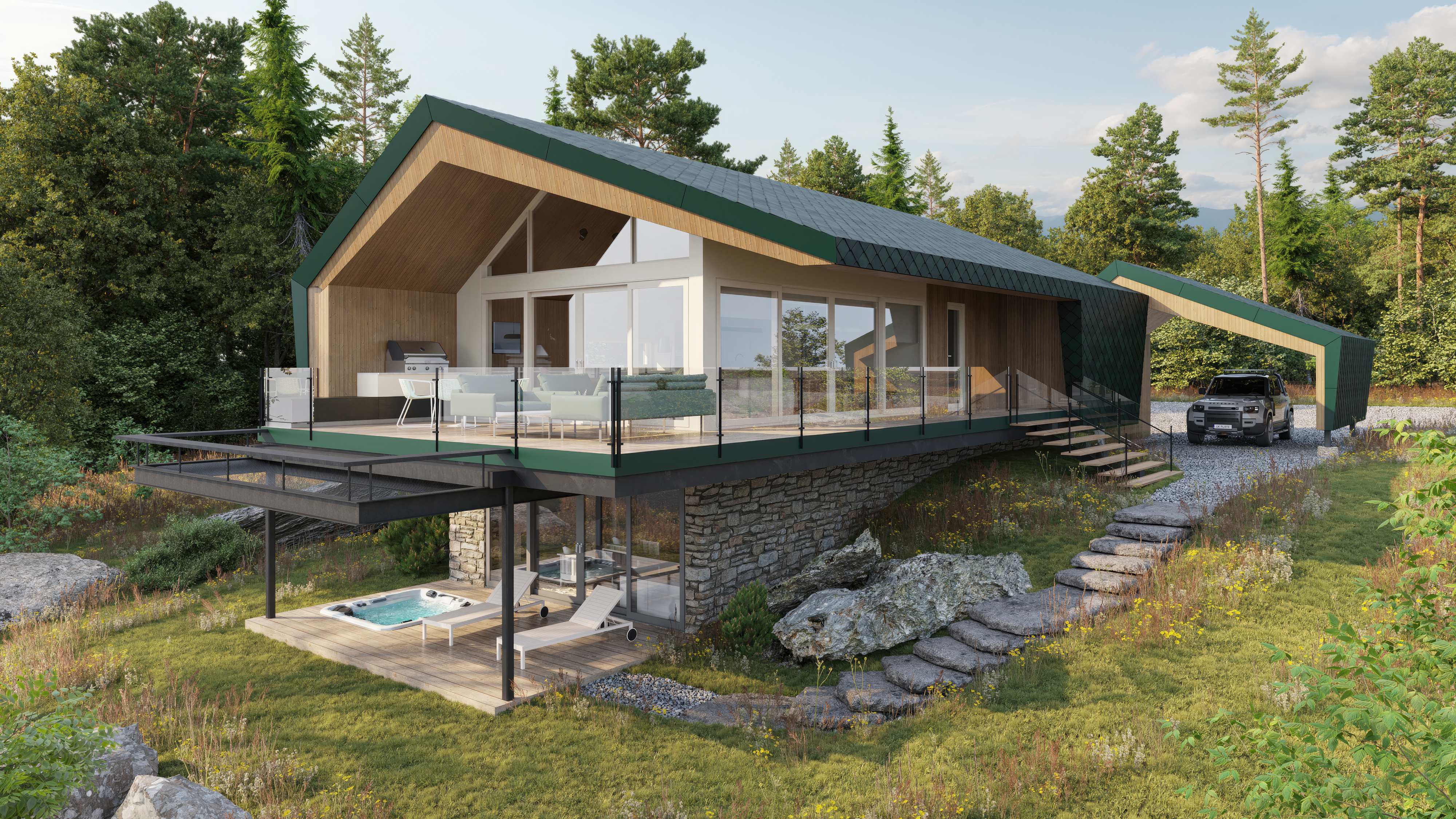
Today it contains necessary information about the objects being designed, which may not exist in tangible reality. Architectural 3D visualization is a tool that helps to navigate space, understand the dimensions, location and appearance of structures.
Architects interacting with clients interpret volumetric layouts demonstrating the advantages of their ideas. This indicates that visualization has become a recognized globally accessible language of communication. But it was not always like this…
Immersiveness in the Renaissance Era
Immersiveness in the Renaissance Era
Initially, there were predominantly animal motifs of cave people, who, through primitive drawings, stayed connected with their contemporaries. Images made of ochre or any other natural pigment served as a gesture of gratitude to bison and deer in response to the opportunity to live. Animals were a source of food and simply a talisman for successful hunting. The circle is closed. Let’s leave it at that for the sake of saving time. Let’s also ignore the medieval era, in which the concept of depth of the frame was disregarded because such a concept could not yet be conceived.
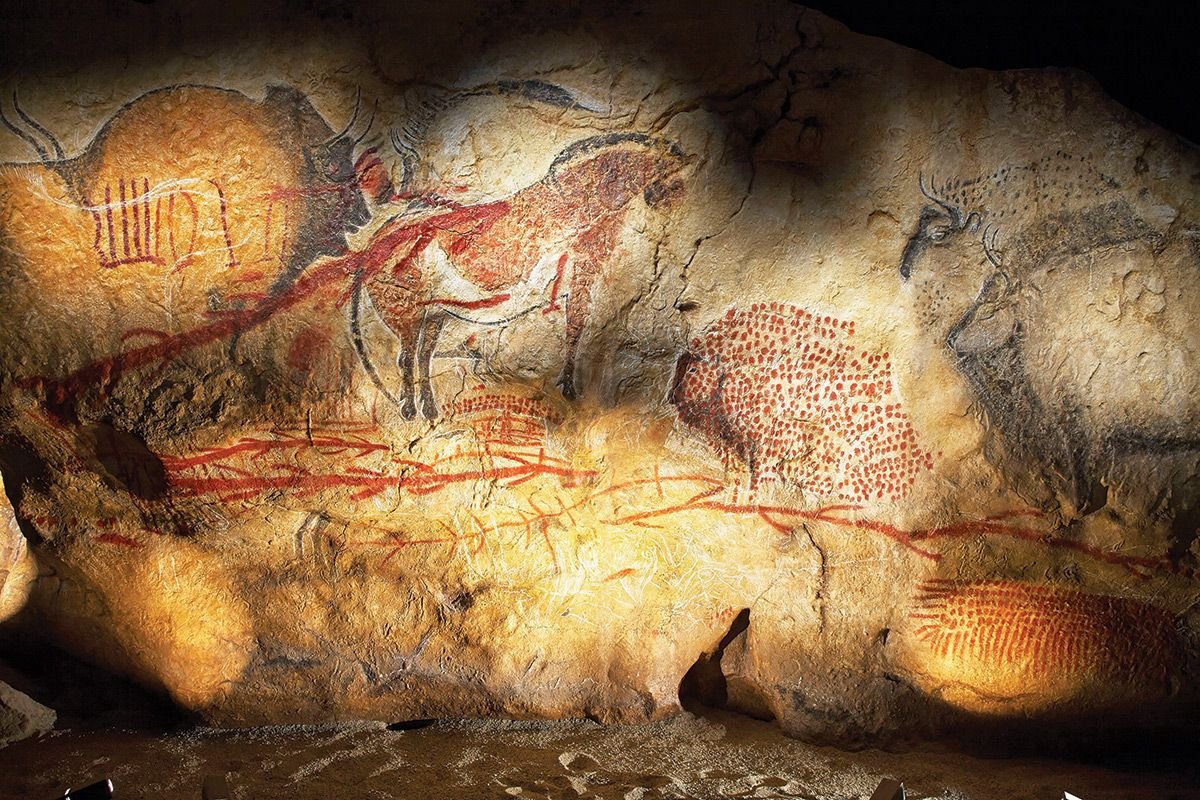
Another matter is the Renaissance period! Let’s transport ourselves to these times of enlightened thought when balance replaced Gothic asymmetry in plan drawings. During this time, many also began to be amazed by the discovery of linear perspective. A key moment in the history of architectural visualization, spearheaded by Filippo Brunelleschi, defined the high realism of future 2D images. In modern terms, the outstanding Italian architect, engineer and concurrently a foreman unknowingly coined a term that found its definition 600 years later is immersiveness. Now the images were not just a set of black and white lines depicting famous dome structures for cathedrals. Now they immersed in the content itself, where the illusion of close or distant objects took a significant place.

Photography as a reference
Photography as a reference
In the 19th century, photography emerged and turned consciousness upside down, much like how objects are seen in a camera obscura. Primitive optical images became the primary reference for architecture because they could not only capture its barely perceptible idea but also immortalize its essence. Historical architectural landmarks burn, collapse and acquire a less-than-fresh appearance due to corrosion or metaphorically the gaze of hundreds of incoming tourists. Photography preserves the form of works of art, which remain forever in memory in their authentic form.

At this point, capturing and “reproducing” reality becomes a real challenge, which in our time takes on multifaceted forms. Why? With the development of technology photography ceases to amaze in the face of existing 3D visualization. However, depending on the context it can compete, kindly interact, complement or contradict the phenomenon of reality created in the digital environment.
Photography completely loses its meaning in an empty plot of land where only the planning of a house is being considered. Architectural visualization in such a case anticipates events and even warns of potential errors in calculations demonstrating the “template” of the future structure.
Photography for a 3D artist is a guide for comparison and a means to evaluate their visualizations. What we see through the camera lens is acceptable for the human brain (although with the use of exposure or long exposure effects distort the reality perceived by the retina of our eye). What a 3D visualizer creates “manually” through mathematical calculations may seem unnatural. Adding artificial light, placing unnecessary reflections from an object whose surface does not possess such a characteristic or mismatches in contrasts can misinform. In such cases, architectural visualizations require refinement if distortion techniques were not intentionally pursued.
The prototype of future optimization
The prototype of future optimization
Initially, Ivan Sutherland aimed to defend his doctoral dissertation, which eventually led to the creation of the first prototype of what would later be known as the user-friendly interface. At this juncture, architects and designers turned to exploring the unconventional method of crafting their “three-dimensional” projects in the precursor program, Sketchpad. Later, another headache remedy emerged simplifying the process of transforming flat drawings into volumetric shapes through ray tracing. Popular programs like 3Ds Max and AutoCAD flourished as a result.
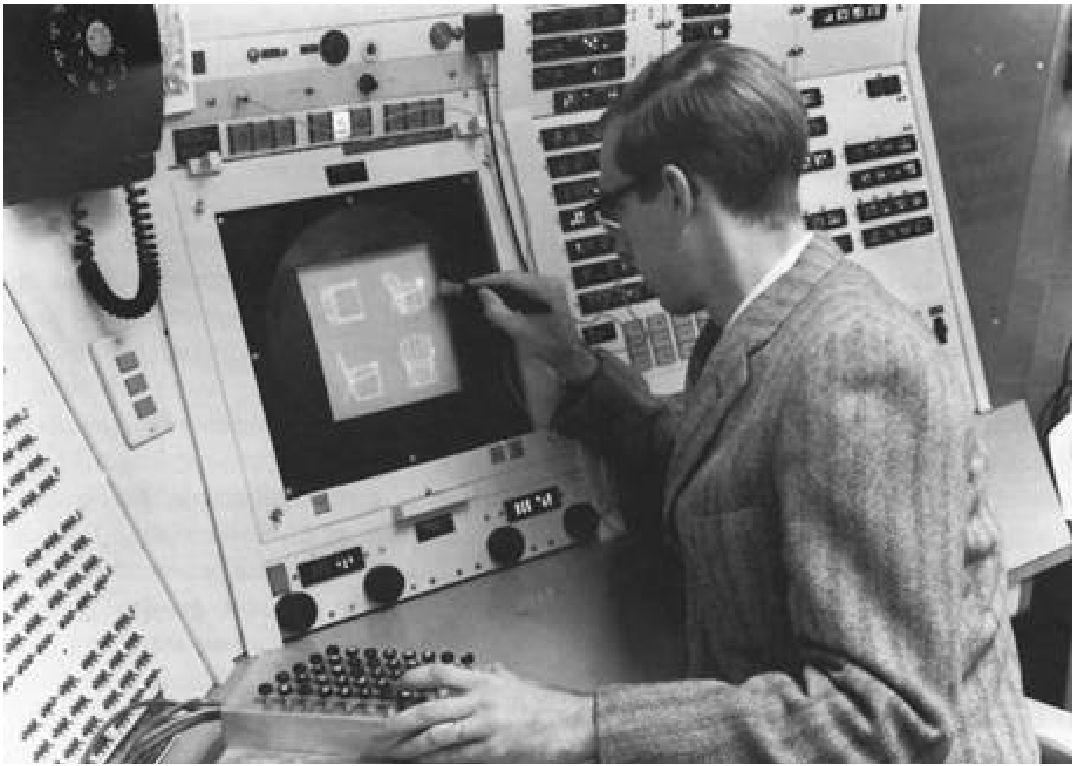
In essence, the digital realm of the 1950s became brimming with opportunities, where precision and intricate detailing emerged as the primary benchmarks for mastering new tools. Against this backdrop, from a technical standpoint, the visual narrative of architectural 3Ds renders and their components (materials, textures, lighting) saw enhancements.
Immersion in the unreal world
Immersion in the unreal world
At the same time, the storyline is looping introducing the concept of “immersion.” The magic of virtual reality captivates and integrates into the workflow of every 3D artist. With this tool they create environments where an ordinary user wearing goggles can physically immerse themselves in the non-existent space of their future apartment (they can touch the velvet chair and rearrange the vase of dried flowers on the kitchen table, for example).

Virtual reality becomes a powerful tool not only because it enhances the interaction between the client and the architect, who communicates their idea through this technology. Virtual reality is capable of preventing problems of various scopes depending on their impact on society. Against the backdrop of a poorly designed kitchen in everyday life, preventing potential crime may seem like a minor oversight (this is a slight reference to how virtual reality explores human emotions when under influence). However, it cannot be overlooked.
AI training
AI training
Within the community of 3D artists there are altruists who create models for free libraries or “engines” that accelerate the rendering process, for example. These same volunteers may in the future train artificial intelligence in the subtle art of creating 3D scenes, which on its own is not capable of matching human quality in executing architectural projects. Nevertheless, ignoring technological progress is not an option, so there’s no harm in experimenting with automated issuance of pre-made wooden textures for flooring in interiors. And refining one’s requests.

Rendering as a new art form
Rendering as a new art form
Today visualizations are not merely about their creation process. They become the subject of a new art form blending knowledge of light, color, composition and visual aesthetics. They are capable of not only containing dry mathematical data but also conveying (even evoking) emotions clearly transmitting ideas and imbuing new meanings. Thinkers of ancient times and Renaissance sculptors are today’s 3D artists, who have the ability to reshape perceptions of architectural visualization from a craft and make their unique contribution to the cultural legacy of our era.

SHARE THIS...

Connect for Specialized Architectural 3D Visualization
Our other articles
Get in touch
The art of 3D visualization is our passion. We specialize in a wide range of services to bring
your ideas to life. In our arsenal, we have architectural rendering, interior visualization, 3D product visualization, 360-degree panoramas, virtual reality (VR), architectural animation, rendering
for metaverses, and many other capabilities.
If you’re looking to elevate your business with stunning visualizations, simply fill out the form below. Our team will get in touch with you shortly to kickstart work on your project. Let’s collaborate to create visualizations that will amaze your clients and help you achieve your goals.
Contact us
